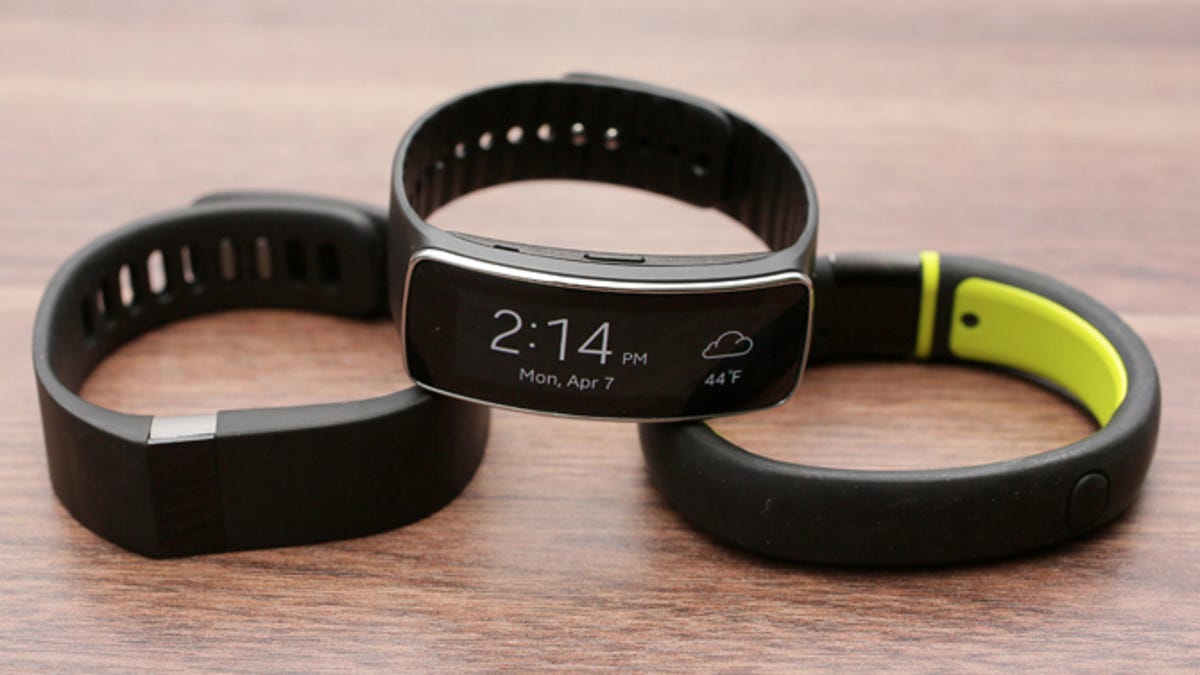
Sarah Tew/CNET
SAN FRANCISCO — Raise your hand if you’ve ever plunked down $100 to $200 on a wearable device, perhaps a Fitbit or a Jawbone wrist-worn activity tracker, and then months later found it deposited in a drawer, without a charge and as despondent-looking as a last-generation cell phone.
Even at the Wearable Technologies Conference held here this week, those who would begrudgingly put their palm in the air included the very same wearables veterans trying to take these devices mainstream. The conference, held annually by the Germany-based Wearable Technologies Group, is a symposium aimed at connecting companies and industry pioneers whose work intersects with wearables.
“I wore a [Nike] FuelBand for the requisite three or four months and then I abandoned it,” Kip Fyfe, CEO of wearable company 4iii Innovations, said Wednesday during a talk titled “Wearables don’t have to be Wristables.”
Fyfe stopped wearing the device because he felt it was inaccurately recording his activity. And for many wearables owners, managing that data and keeping the product charged is more cumbersome than any potential rewards.
The central issue — that these devices are not only expensive and unnecessary, but don’t even hold the attention of those who do buy them — is the nascent market’s “dirty little secret,” Fyfe said. He is not alone in that assessment.
“The No. 1 shipped wearable device in 2013 was the heart rate monitor chest strap. How about that for a technological revolution for you? It has not changed its form factor since 1976,” said Liz Dickinson, another industry leader here at the conference who spoke in a talk titled “The Wearable Tech Use Case: What Do Consumers Really Want?”
Related stories
- Adidas Fit Smart wearable strips down to make its run
- Google’s Android Wear: 13 things you should know
- Microsoft’s wearable ambitions revealed
- Gear Fit: How Samsung’s fitness tracker got its curve
Dickinson is the founder and CEO of Mio Global, a provider of both standalone heart rate monitors and heart rate reading technology to device makers like Adidas. For her, heart rate monitors are the defining feature of wearables today. “Why on Earth would 12 million people buy these devices last year?” she posited. Nothing else is providing enough value, despite chest-strap heart rate monitors being perhaps the most uncomfortable consumer wearable device you can buy today.
When asked by an attendee what the solution is to increasing the lifespan of wearables, Fyfe’s response was no more uplifting than his swift dismissal of the FuelBand.
“You have to find something or some things that people can’t live without. The reason people like these devices in our hands,” he said, holding up a smartphone, “is because people cannot live without them.” Until wearables reach that point and stop being a simplified extension of the smartphone, Fyfe continued, they will continue to be seen as niche devices for gadget lovers and early adopters.
Though the wearable-technology market is estimated to be worth $5.24 billion in 2014, according to market researcher Visiongain, we’re all still supposedly waiting for an “iPhone moment,” a term that refers to the smartphone boom, which started in 2007 with the introduction of the first iPhone. Such a moment would be a turning point for wearables — when everyday consumers are convinced that they really need to strap computers and sensors to their skin. (Whether Apple’s rumored “iWatch” wearable, reportedly in development, will create that shift is unclear.)
However, the smartphone was an evolution of an existing device that many consumers already owned and found to be invaluable. Wearable technology’s most popular and recognizable form factors are watches, bracelets, and glasses. Those are devices that not everyone owns, and we have little incentive to ever use or wear computerized versions of them unless several key factors — cost, style, usefulness — reach a perfect balance.
Recent studies conducted by Bank of America and USA Today found that nearly half of all Americans couldn’t go a day without their smartphones, and that 3 out of 10 people would go back home if they forgot it. As Fyfe pointed out, nobody is quite willing to say that much for their Fitbit, nor would a day’s worth of data lost to a drained or forgotten device impact anyone drastically.
Until then, wearables are trudging uphill.



